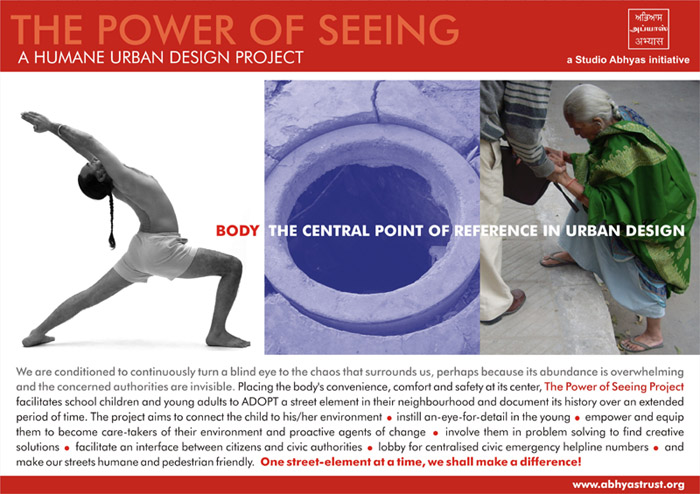In 1992, Navtej Johar returned to India after a gap of nine years and was dismayed to observe that Indian cities were just as chaotic and haphazard as he had remembered them, they continued to overlook the concerns and safety of the pedestrians, lacked attention-to-detail, and most of all were discourteous to the human body. The second despairing realization was to watch his young nieces and nephews whom he had left behind as pre-teens, now grown up and driving and behaving on the streets in the same manner as the generation before them did. And that was scary,” recalls Johar, because he was struck by the fact that if new generations would keep growing with the same mindset, then there was actually little scope for real change. It was then that he started to dream about a project that would target the indifferent attitude of us Indians (citizens and authorities alike) towards the “outside,” i.e. the streets, public property and facilities, and use children as catalysts of change. In 1997, the Uphaar tragedy that resulted in the death of 59 movie goers in a cinema hall at New Delhi, in Johar’s residential area further reinforced his resolve and in 2006 he initiated The Power of Seeing: Humane Urban Design Project. The fire was caused due to a faulty transformer in the basement of the theatre and the people were trapped inside because basic safety laws were flouted and the passages and fire-exits blocked with extra seats.

E-mail : abhyastrust@gmail.com
Copyright © 2020-21, Abhyas Trust, New Delhi (INDIA) Site Designed & Maintained by mark design
Copyright © 2020-21, Abhyas Trust, New Delhi (INDIA) Site Designed & Maintained by mark design
